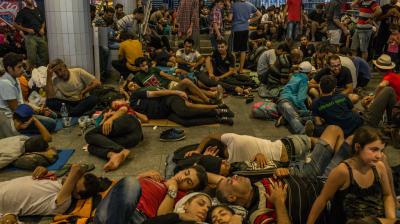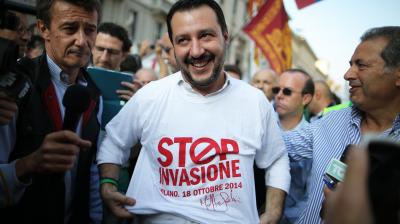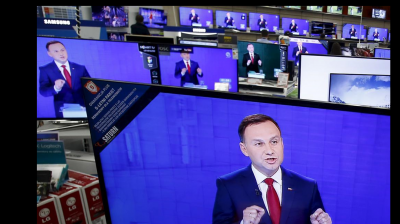The countdown has begun: Between the 23rd and 26th of May, the European elections take place. As the European elections approached, the campaigns of the different political parties in EU Member States came into full swing. What is at stake? And where should the European Union be heading? Anyone who listens to a European election debate in the Netherlands on these issues, however, could easily forget that the European elections take place in 28 different Member States. Though the coming elections are European in nature, parties are inclined to campaign and operate nationally in the absence of transnational electoral lists. Subsequently, it is easy to lose sight of the fact that the final election results, and the future EU agenda, also depend on the interests and concerns of voters in other EU Member States.
Therefore, this article describes the polls and predictions about the EU elections not in a Dutch but in a wider European context. To get a grasp on where the EU will be heading after the EU elections, an increasing amount of national but also EU-wide opinion polls (i.e. cross-section of national polls) have appeared in the media. While perhaps stating the obvious, some words of caution are needed regarding these polls. European elections are not seldom treated as second order elections.[1] Turnout during the EU elections is relatively low.[2] Consequently, the polls do not necessarily reflect the immediate support and trust of voters for a European political group or particular Member of the European Parliament (MEP). Besides, the impending departure of the United Kingdom has an impact on the current polls.[3] Since the United Kingdom (UK) will participate in the EU elections, this article will use Politico’s recent EU-wide polls of all 28 Member States to give an impression of certain trends and expectations across the continent.[4]
Figure 1. Politico’s European Election seat projection (including UK seats – 21/5/2019)[5]
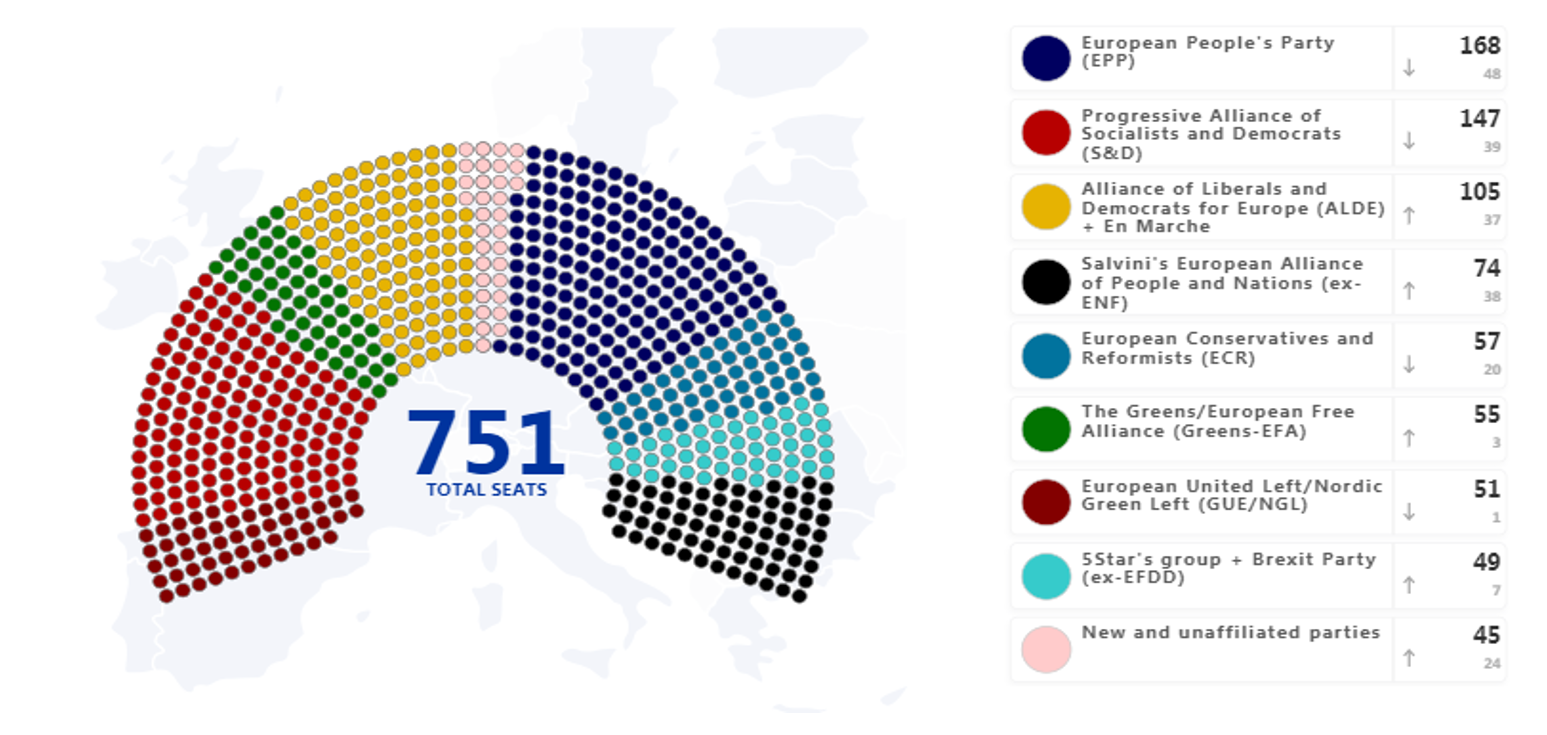
The end of the ‘grand coalition’
To form a majority in the European Parliament (EP), a coalition between European political groups needs at least 376 seats.[6] So far, this has always been a combination of the Christian democrats in the European People’s Party (EPP) and the social democrats in the Socialists and Democrats (S&D). Despite some heavy losses for both parties, EU-wide polls consistently predict that the EPP will remain the biggest party (currently at 168 seats – losing 48)[7], followed by the S&D (currently at 147 seats – losing 39)[8]. This means that together the parties will only have 315 seats, leaving them 61 seats short of forming a majority in the EP. Although there have been some fluctuations in the polls[9], it is almost certain that after forty years the so called ‘grand coalition’ of the EPP and S&D will end. Also if a Brexit takes place, only 313 seats would go to the EPP and S&D which is insufficient to form a majority in the EP of 705 MEPs.[10]
So, the big question is which party or parties are going to be the new coalition partner(s) of the EPP and the S&D? Most likely the EPP and S&D will try to form a ‘small’ majority in the next EP. Based on the current seat projections, there are a few prospective new coalition partners. The most likely candidate is the Alliance of Liberals and Democrats for Europe (ALDE) amalgamated with Macron’s La République En Marche (currently at 105 seats – winning 37 seats). Yet, based on the amount of seats, the Eurosceptics within Salvini’s European Alliance of People and Nations (EAPN, currently 74 seats – winning 38 seats in comparison to the former Europe of Nations and Freedom (ENF) party) are also a possible coalition-candidate. However, looking at the party’s manifestos and ideas about the future of Europe, it would be a rather unusual coalition.
In this respect, a broader coalition with the Greens (currently at 55 seats – winning 3) would make more sense, especially after the call of Frans Timmermans, ‘Spitzenkandidat’ of the S&D, to vote green during an EU election debate in the Netherlands.[11] Although it remains to be seen what the final election results will be when the ballot boxes close on the 26th of May in Italy, the Greens will probably at best form a very small majority with the EPP and the S&D but more likely they will take place in a broader coalition with the EPP, S&D and ALDE. Looking at the success of the Green party during local elections in the Netherlands, but also Germany and Belgium, it might seem remarkable that the Greens in the EP are predicted to win only 3 seats (see figure 1). However, there is a big division between EU Member States on this issue: While climate change is considered a top five priority during the EU election campaign in most of the north-west of Europe, the voters in the south-east of Europe have other top priorities – such as migration, terrorism, financial and economic concerns, inflation, crime and EU’s influence in the world.[12]
The rise of Eurosceptic and anti-EU parties
Furthermore, EU-wide polls show a rise of Eurosceptic and anti-EU parties. Among these parties, the European Alliance of People and Nations (EAPN) is forecast to gain the most seats (currently at 74 seats – winning 38). The key figures in this far-right group are Matteo Salvini of Italy’s Lega Nord party and Jarosław Kaczyński of the Polish PiS party. The second-largest Eurosceptic group is the European Conservatives and Reformists (ECR). While the ECR is forecast to lose ground, it is still the fifth-largest group in the polls (currently at 57 seats – losing 20). Finally, the five-star group and the Brexit party - formerly Europe of Freedom and Direct Democracy (EFDD) - are on course for a slight increase in seats (currently at 49 seats – winning 7).
These three Eurosceptic and anti-EU parties currently have 180 seats in the polls, which is roughly a quarter (24 %) of the total amount of seats in the EP.[13] While these figures give an idea of the political climate in the EU Member States, one must be careful to draw conclusions. While political groups tend to be divided into pro- and anti-EU groups - as shown in Politico’s figure below - the reality seems to be more complex. The differences between - and in some occasions even within[14] - European political groups are too big to really speak of a single group of anti-EU parties. The same applies of course to pro-EU parties. Nevertheless, the (lack of) cooperation between Eurosceptic and anti-EU parties has been a hot topic of debate – especially after the unsuccessful attempts of Steve Bannon (former advisor to President Trump and founder of the hard-right breitbart.com) to bring right-wing, anti-EU parties together in one single ‘Movement’.
Figure 2. Politico’s projection of seats for Pro-EU and Eurosceptic parties
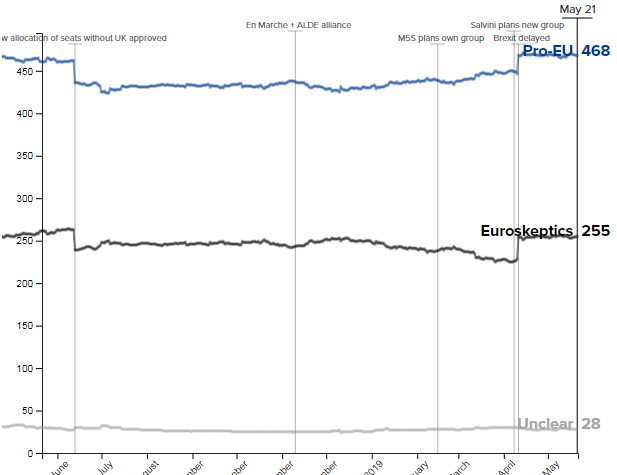
Yet, even if the Eurosceptic parties manage to cooperate in the next mandate - which is unlikely, based on the past experiences with Eurosceptic and anti-EU parties who failed to work together in unity during the past mandate - a quarter of the seats will not be enough to seriously challenge the mainstream groups or form an obstacle in legislative debates.
In conclusion, are the Eurosceptic and anti-EU parties a force to be reckoned with in the next mandate? In political practice, so far, the Eurosceptic anti-EU parties in Brussels have been clearly under-performing. Nevertheless, their influence on the debate on the future of Europe as well as their impact on the discourse of mainstream or center parties should not be underestimated.
The rise of political fragmentation
EU politics is no longer business as usual. Something has happened in recent years, and the European debate is transforming. The idea that foreign and European politics is not something for ‘the common people’ is over. People are increasingly interested and engaged with European politics. European political groups can profit from this interest, but have to cater to the wide range of demands from their national political parties’ constituencies. What are the common aspirations and worries of their voters towards Europe? By being inclusive and response to the demands of different national constituencies - and trying to find a common denominator – European political groups incur a risk of pleasing too many and no one at all. A recent ECFR report, send a warning against campaigns running on status quo messages. Based on extensive polling, the report argues for middle ground parties across Europe to position themselves as agents of change in order to win (back) electorates, and to hold the political centre.[15]
Looking at the current voting preferences across the EU28, the next hemicycle would reflect a more fragmented political landscape than ever. At the same time, major political and cross-border challenges need to be addressed. The past mandate has shown some substantive dividing lines between EU Member States on important cross-border challenges, such as migration.[16] During the EU elections, however, these differences are hard to detect. Within the European political groups the dividing lines between Member States and corresponding (national) parties seem to be concealed in the more generally formulated manifestos.[17] Moreover, in the absence of transnational election lists, national campaigns and election programs are tailored to the expectations of citizens within each Member State. The outcome of these national debates, however, are difficult to translate directly into the policies of European political groups. As a result, after the EU elections, the national differences and demands are easily veiled or even watered down within the European political groups.[18]
This toxic mix of growing political fragmentation in the EP and the division among European Member States and their citizens, makes it more and more difficult to determine which themes will be given priority after the elections, but also how and whether action will be taken. Yet, one thing is clear. In the search for solutions to the major issues of our time, one core theme will certainly come to the fore: the capacity of the EU to deliver and to find support among EU citizens in the future.
Follow our EU-expert @hvdbij & @clingendaelorg on Twitter for the latest publications.
[1] Almut Moller, ‘European Election Campaigns in Germany’ Clingendael #EP2019 election platform (17 May 2019).
[2] This internal divisions within European political parties also applies to other important election themes such as solidarity, the euro, climate or security. See: Hedwich van der Bij en Jan Marinus Wiersma, ‘Gedeelde zorgen, uiteenlopende oplossingen voor EU-burgers’ Clingendael Spectator (25 March 2019). Hedwich van der Bij en Wouter Zweers, ‘Migratiebeleid: Splijtzam van de EU?’ Clingendael #EP2019 election platform (21 May 2019)..
[3] European party manifestos don’t dictate the course of a European political group. The manifestos, however, do illustrate the difficulty of finding compromises and common denominators within a European political group. While the national political parties in a European political group share the same ideals, there is often a lack of agreement on the details – such as ‘who pays’ and ‘who decides’ (EU or national level) – leading to vague compromises and general terms in the European party manifestos. For instance, all parties within a European political party want to tackle migration, but they disagree internally how this should be done. This also applies to other main election themes such as solidarity, the euro, the climate or security. See: Hedwich van der Bij en Jan Marinus Wiersma, ‘Gedeelde zorgen, uiteenlopende oplossingen voor EU-burgers’ Clingendael Spectator (25 March 2019).
[4] This is illustrated in the past by Votewatch data on the average group cohesion (i.e. voting discipline) of political groups in the EP in all policy areas - which was around 90 percent for the three biggest European political groups (EPP, S&D and ALDE). See: ‘European People’s Party (EPP) is the most united political family in the new European Parliament’ Votewatch (1 March 2015).
[5] The EP has 751 seats in total, including the president of the EP (currently Antonio Tajani) and 750 Members of the European Parliament.
[6] The long-dominant center-right European People's Party, remains the biggest group, but is projected to lose the most seats (falling with 48). The party may even loose more seats if Fidesz, a Hungarian right-wing populist party, will leave the EPP – due to their anti-Juncker and anti-Brussels campaign during the EU elections.
[7] EU-wide polls show that the party will be hit the hardest in Italy, Germany and France. A trend analysis of the EU-wide polls shows that the centre-left S&D is slightly winning back terrain, but nevertheless will be confronted with a great loss.
[9]. See footnote 5 for more information on Politico’s seat projections of the EP without the UK.
[10] “He meant all parties who are in favor of action in the fight against climate change. Nevertheless his appeal is remarkable, because why would a voter not vote for the original, such as the Greens of Eickhout?” See: Arie Elshout, ‘Het eerste debat tussen lijsttrekkers is symbolisch voor de Europese politiek’ Volkskrant (29 april 2019).
[11] Based on Eurobarometer data, Politico gives an interactive look at voters’ top concerns and how they have evolved since the last European election. This data shows e.g. that voters in the Visegrad countries don’t see climate as a top five priority. See also: Paul Hofhuis, Klimaatverandering: Verkiezingsthema voor alle Europeanen Clingendael #EP2019 election platform (26 april 2019).
[12] In comparison, the Eurosceptic and anti-EU parties (including ECR, EFFD and ENF) gained 156 seats during the EU elections in 2014 - which is 21% of the total amount of seats.
[13] E.g. due to dividing lines between EU Member States and their corresponding national political parties within a European political group.
[14] This is e.g. illustrated by the insights of experts from different EU Member States on the Clingendael #EP2019 election platform, which demonstrates a heavy influence of national politics on voters during EU Elections.
[15] The average turnout in all EU Member States in 2014 was 42.54%. Turnout among young people, 18 to 24 (in Austria 16 to 24), was 28%. In the Netherlands, the turnout was even lower: an average of 37.32% of the Dutch people voted. Among young people it was only 18%.
[16] If Brexit takes place, the amount of seats in the EP will be lowered from 751 to 705 seats . Only 27 British seats will be redistributed among 14 under-represented Member States (including 3 additional seats for the Netherlands).
[17] National parties are only allocated to existing political groups or where they are already affiliated to an associated European political party. All new political parties and movements, who have not yet declared their intentions are categorised as “other”.
[18] The seat projections for the EP without the UK can also be found on the Politico website: The EPP remains the largest party (177 seats) followed by the S&D (136 seats), ALDE (98 seats), EANP (76 seats), ECR (54 seats), GUE/NGL (50 seats), Greens-EFA (47 seats), unaffiliated parties (44 seats), 5star group and brexit party (23 seats). This means that in comparison to the current seat projections, only the EPP will win votes (+9 seats), while (not unexpectedly) the 5start and Brexit party (ex-EFDD) will lose the most (-26 seats) - followed by the S&D (-11 seats), the Greens (-8 seats) and ALDE (-7 seats). The ECR (-3 seats), EANP (-2 seats), GUE/NGL (-1 seats) and new unaffiliated parties (-1 seats) only have a slightly less amount of seats.


